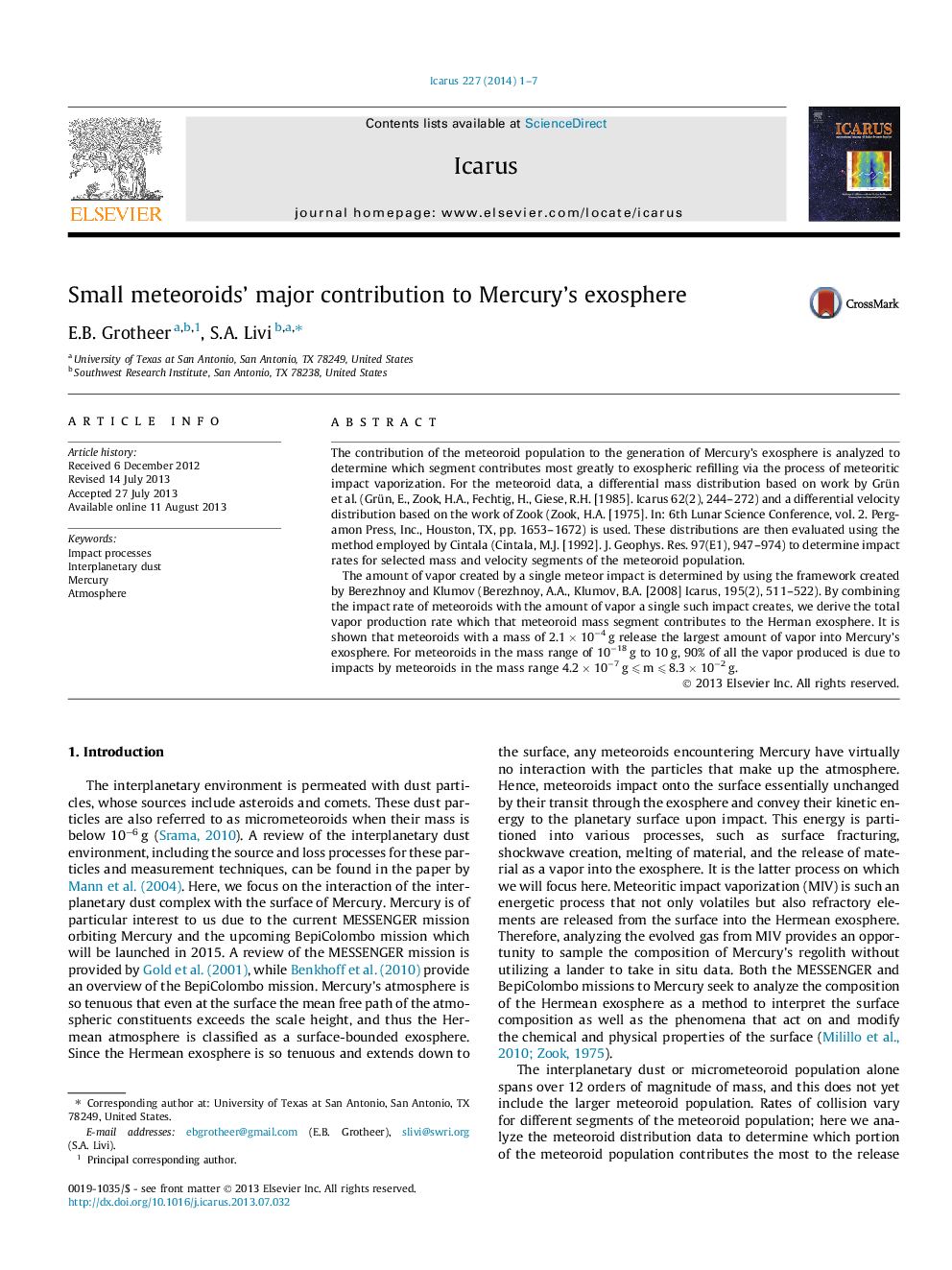| Article ID | Journal | Published Year | Pages | File Type |
|---|---|---|---|---|
| 1773254 | Icarus | 2014 | 7 Pages |
•The interplanetary dust complex fills the Solar System but is most studied at 1 AU.•The 1 AU dust data can be extrapolated to other locations, such as Mercury’s orbit.•Combining mass and velocity distributions yields impact rates onto planets.•Impact rates multiplied by vapor mass lead to total production rate for given mass.•Small meteoroids supply most of the vapor due to MIV in Mercury’s exosphere.
The contribution of the meteoroid population to the generation of Mercury’s exosphere is analyzed to determine which segment contributes most greatly to exospheric refilling via the process of meteoritic impact vaporization. For the meteoroid data, a differential mass distribution based on work by Grün et al. (Grün, E., Zook, H.A., Fechtig, H., Giese, R.H. [1985]. Icarus 62(2), 244–272) and a differential velocity distribution based on the work of Zook (Zook, H.A. [1975]. In: 6th Lunar Science Conference, vol. 2. Pergamon Press, Inc., Houston, TX, pp. 1653–1672) is used. These distributions are then evaluated using the method employed by Cintala (Cintala, M.J. [1992]. J. Geophys. Res. 97(E1), 947–974) to determine impact rates for selected mass and velocity segments of the meteoroid population.The amount of vapor created by a single meteor impact is determined by using the framework created by Berezhnoy and Klumov (Berezhnoy, A.A., Klumov, B.A. [2008] Icarus, 195(2), 511–522). By combining the impact rate of meteoroids with the amount of vapor a single such impact creates, we derive the total vapor production rate which that meteoroid mass segment contributes to the Herman exosphere. It is shown that meteoroids with a mass of 2.1 × 10−4 g release the largest amount of vapor into Mercury’s exosphere. For meteoroids in the mass range of 10−18 g to 10 g, 90% of all the vapor produced is due to impacts by meteoroids in the mass range 4.2 × 10−7 g ⩽ m ⩽ 8.3 × 10−2 g.
